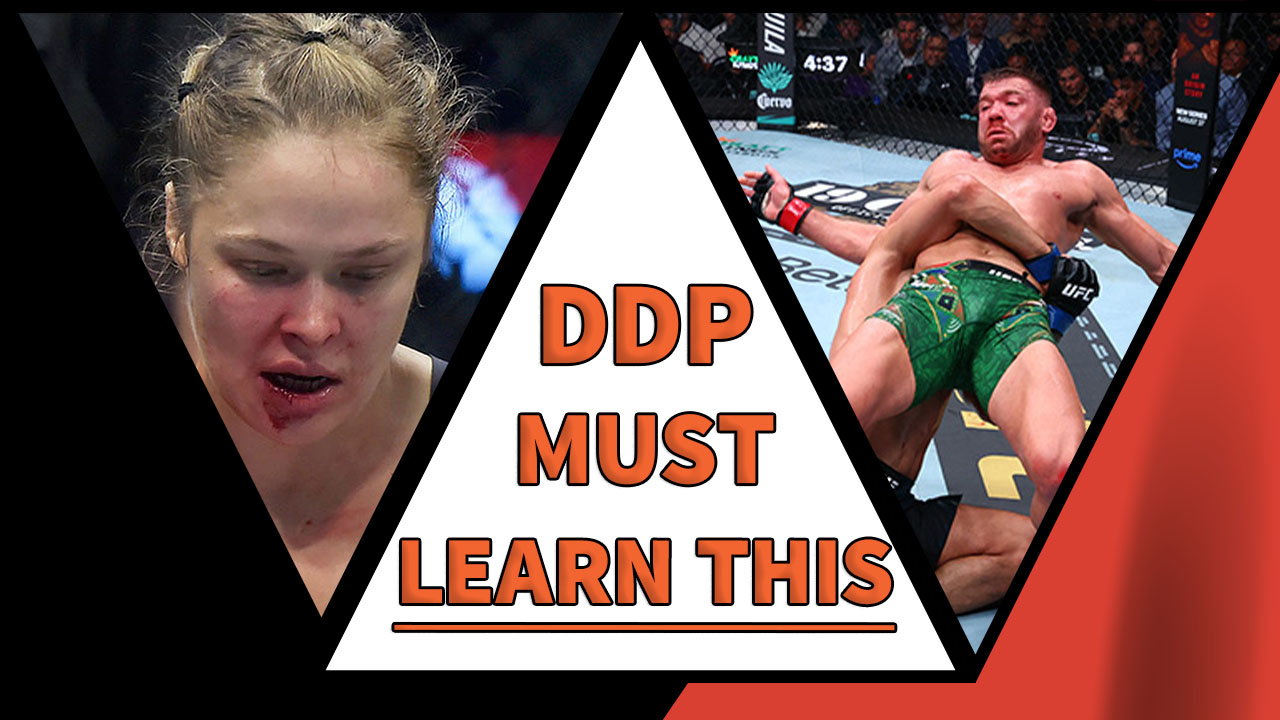November 14th, 2015. Ronda Rousey suffered her first career loss in MMA, losing her UFC championship belt to Holly Holm and a well-timed headkick.
Almost ten years later. Dricus Du Plessis loses the middleweight championship, after an 11 fight win streak that included two title defenses.
The two situations are different in many ways, but there may be a valuable lesson Dricus can learn from Ronda’s mistakes.
In 2015, Ronda was fighting a world-class striker in Holly Holm. But her coach Edmund had her convinced that she could and WOULD out-box Holm.
In 2025, Dricus was facing one of the best wrestlers in the history of MMA, but his coach Morne thought he had the skill to beat Khamzat anywhere, even on the mat.
Watch the full video essay on YouTube.
The Story of Ronda Rousey
Ronda Rousey’s rise was a phenomenon. An Olympic judo bronze medalist, she bulldozed through the women’s bantamweight division in King of the Cage, HKFC, and Strikeforce before it was acquired by the UFC. She became known for her persistent judo throws and trips, and her sudden, vicious application of the armbar submission.
Following a first-round armbar victory over Liz Carmouche at UFC 157, the first UFC to include female fighters, Rousey won another five fights in a row, including three first-round stoppages due to knockout or TKO.
To many, Ronda Rousey seemed unbeatable in the women’s bantamweight division. But she wasn’t above criticism, and some of the aspects of her career drawing negative attention related to her coach, Edmond Tarverdyan.
The Problematic Coaching Relationship
Rousey began training with Edmond Tarverdyan, a boxing coach, in 2010 before her first amateur MMA fight. By most accounts, Rousey had to convince him to train her, as he was initially reluctant to work with a female fighter.
But Edmond did become her coach, and as Ronda rose to fame, he became an active part of the narrative surrounding many of her fights, not to mention outside-the-octagon conflicts.
In hindsight, it seems clear that Edmond and Ronda’s strong, long-standing friendship caused blindspots for both of them. Ronda couldn’t see that Edmond didn’t possess the skill or experience to coach a world-class fighter, and Edmond glossed over her weaknesses in training.
While Ronda’s striking improved, contributing to her wins by knockout, it still lagged far behind her elite grappling skill. But Edmond believed Ronda could knock out any opponent she faced, and Ronda believed Edmond.
The Cost of Hubris
Against Holly Holm, a former boxing champion, Rousey didn’t press for the takedown, and Edmond didn’t call for it. Footage from Rousey’s corner during the fight shows Edmond constantly calling for head movement, until moments before the headkick knockout when he frantically shouts for her to “clinch”.
The loss was a shock, but the real failure was the game plan, and it didn’t get better. In her next and final MMA fight, Rousey tried to outbox Amanda Nunes, and got KO’d again for her trouble.
The Fall of Dricus “Stillknocks” Du Plessis
Dricus Du Plessis made his name his unique style and immense physical strength, which made him a puzzle that most of his opponents couldn’t solve. It even earned him the UFC middleweight title.
The Unwavering Loyalty
Du Plessis’s relationship with head coach Morne Visser is a lifelong partnership. They have been working together for over a decade, and Du Plessis is a co-owner of their gym, CIT Performance Institute. The two are a team in every sense of the word.
The End, or the Beginning?
Dricus and his team expressed confidence. They believed his grappling was strong enough to not only defend against Chimaev, but to use against him as well. They walked into the cage with a belief they could beat a master grappler at his own game.
Chimaev dominated, securing 12 takedowns and controlling Dricus for nearly 22 of the 25 minutes. Dricus was utterly outclassed. He could barely get to his feet, let alone mount any of his signature offense. One analyst noted that Chimaev didn’t use advanced techniques, but instead, controlled Dricus with “the basics”, a clear sign of the immense skill gap. Like Rousey, Dricus went into a fight with a flawed strategy and paid the ultimate price.
The Lessons for Du Plessis and All Fighters
The failures of Rousey and Du Plessis share a common root. They were both victims of a positive bias that allowed them to believe a developing skill was already world-class. It’s a testament to the power of a close relationship. A coach’s unwavering belief, even in the face of reality, can become a fighter’s biggest weakness.
This isn’t to say that loyalty is a bad thing. But it is a stern reminder to check our biases when making decisions that impact our health and careers. A fighter’s biggest weapon is not a single move, but their mind, and the strategies they pursue both in the cage and in the gym.

